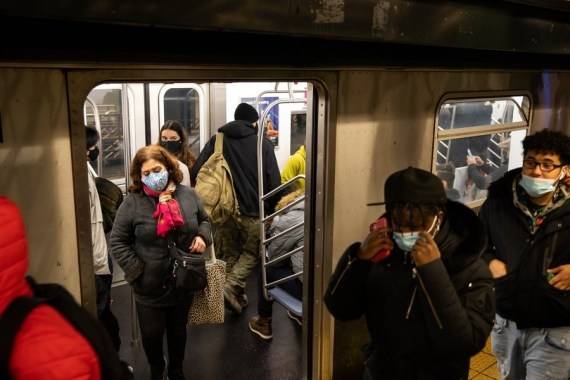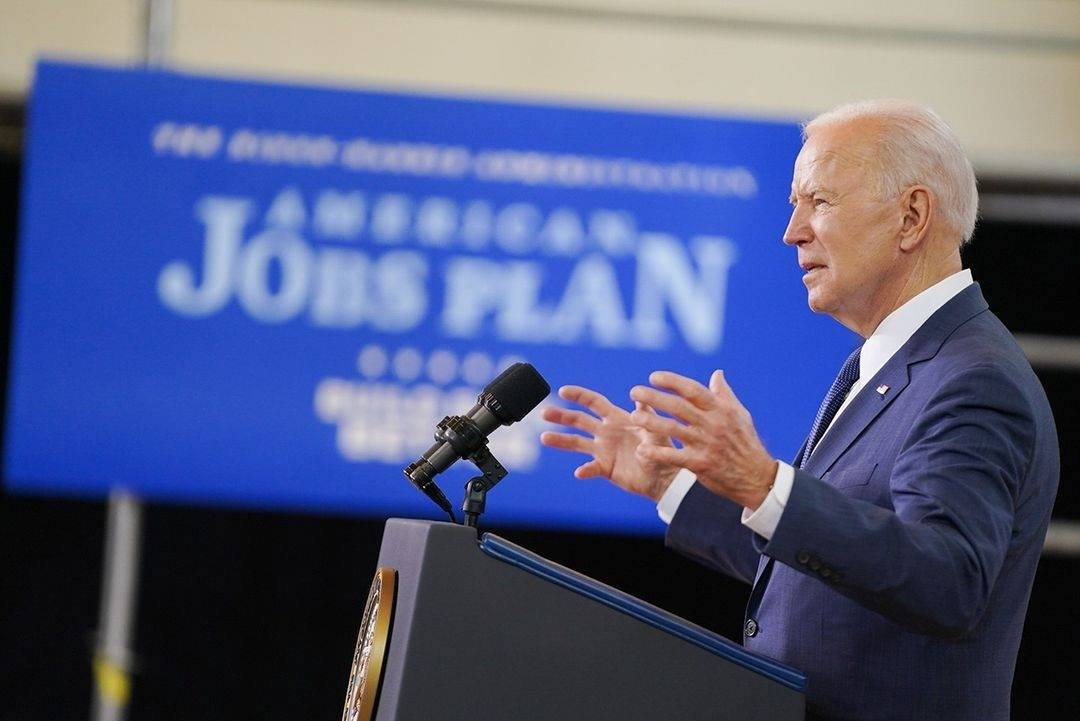Biden described the plan as “a once-in-a-generation investment in America” and compared its scoped to the space race of the 1950s and 1960s when the US confronted the Soviet Union…reports Asian Lite News
US President Joe Biden has unveiled an ambitious $2 trillion plan to overhaul the nation’s deteriorating infrastructure and create jobs while putting the country on its way to “win the global competition with China”.
Outlining it in Pittsburgh on Wednesday, he called the plan “a once-in-a-generation investment in America” and compared its scoped to the space race of the 1950s and 1960s when the US confronted the Soviet Union and won the race to the moon.
The first phase of it, called the ‘Jobs Plan’, aims to modernise transportation infrastructure — the roads, bridges and airports, he said.
Although couched as an infrastructure initiative, this plan has a much wider ambition.
It ranges from spurring scientific and industrial research to incentivising adoption of electric vehicles and from boosting domestic manufacturing to building affordable housing.
“It grows the economy in key ways. It puts people to work to repair and upgrade what we badly need. It makes it easier and more efficient to move goods, to get to work, and to make us more competitive around the world,” the President said about its basic agenda.

It is to be financed through an increase in corporate taxes from 21 per cent to 28 per cent and hiking taxes on those making more than $400,000 a year.
Biden acknowledged that the US was one of the major economies where public investment in research and development as a share of GDP has declined constantly over the last 25 years.
“We’ve fallen back. The rest of the world is closing in and closing in fast.”
Through decades of neglect and underinvestment, the roads, rails and local train systems in many places are crumbling, and many of the airports are outmoded and wouldn’t compare to the most modern ones in Indian metro cities.
The US electrical grid has catastrophically failed in several places, most recently in Texas last month with power outags over several days.
Biden’s plan, if successful, would inject the needed capital and give the political impetus to modernising the infrastructure as the US creeps up from under the Covid-19 devastation.
Having recognised the competition with China that has made massive investments in building its infrastructure and its scientific and industrial capabilities and extending its reach abroad, Biden made Beijing the backdrop to his endeavour.
His plan, he said, “will grow the economy, make us more competitive around the world, promote our national security interests, and put us in a position to win the global competition with China in the upcoming years”.
“It’s going to boost America’s innovative edge in markets where global leadership is up for grabs a” markets like battery technology, biotechnology, computer chips, clean energy, the competition with China in particular.”
Globally he framed it as a race between democracies and autocracies.
“That’s what competition between America and China and the rest of the world is all about. It’s a basic question: Can democracies still deliver for their people? Can they get a majority?
“I believe we can. I believe we must,” the President noted.
But democracy is what stands in the way of his plan as he is buffeted by the left and right.
Also read:Biden in Limbo as Taliban Flex Muscles
He will need the backing of at least 10 Republican Senators to get the 60 votes needed in the evenly divided Senate to get the plan approved while keeping his base intact.
The main sticking point is his proposal to raise taxes.
Appealing to them, he said that the Republicans “know China and other countries are eating our lunch. So there’s no reason why it can’t be bipartisan again”.
Former President Donald Trump had promised a massive infrastructure plan during the 2016 election campaign but was so distracted by his less pressing obsessions that he never got around to seriously pursuing it before Covid-19 hit the world.

Republican Senate leader Mitch McConnell said he was unlikely to back Biden’s infrastructure plan.
“It’s called infrastructure, but inside the Trojan horse it’s going to be more borrowed money, and massive tax increases on all the productive parts of our economy.”
A way around the Republican Senate roadblock would be for the infrastructure legislation to be treated as an amendment to the budget, which would need only 51 votes. And that’s what Biden, Speaker Nancy Pelosi and Senate Democratic leader Chuck Schumer are preparing for.
Also read:Biden reassures Americans again
But Biden will also face opposition from his Democratic Party’s left.
Indian-American Congressional Progressive Caucus Chair Pramila Jayapal called for a “bolder” and more comprehensive plan that would tackle climate change more aggressively.
“It makes little sense to narrow his previous ambition on infrastructure or compromise with the physical realities of climate change,” she said.
House of Representatives member Alexandria Ocasio-Cortes, who is a member of the Democratic Socialists group, had proposed a $10 trillion plan.
She compared Biden’s plan to the $1.9 trillion Covid-19 relief passed by Congress earlier this month and tweeted that the President new proposal “is not nearly enough. The important context here is that it’s $2.25 trillion spread out over 10 years”

